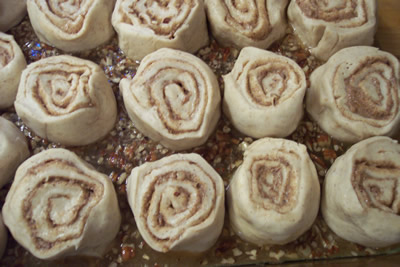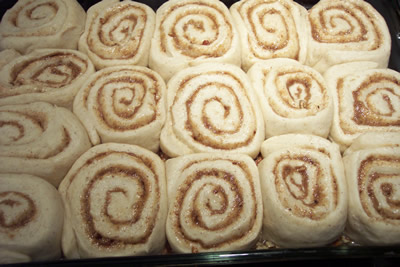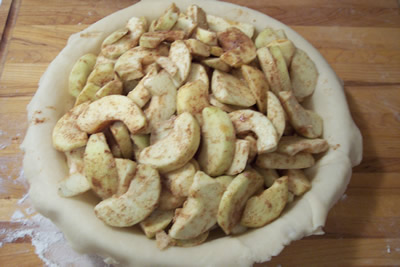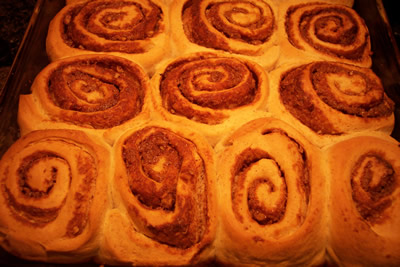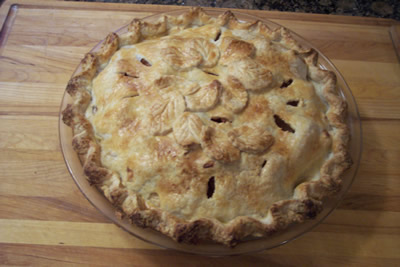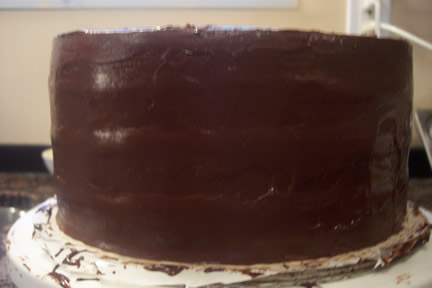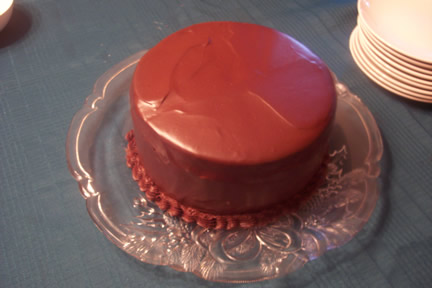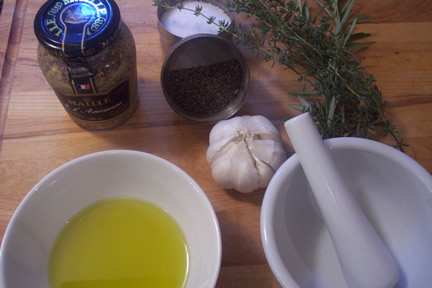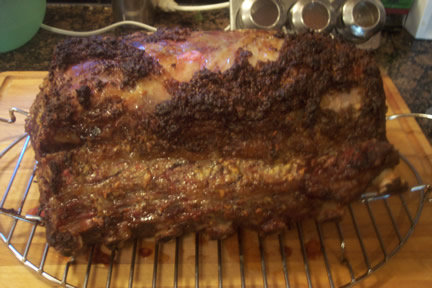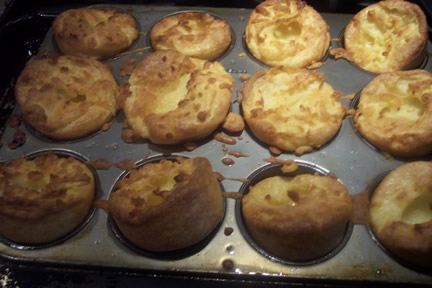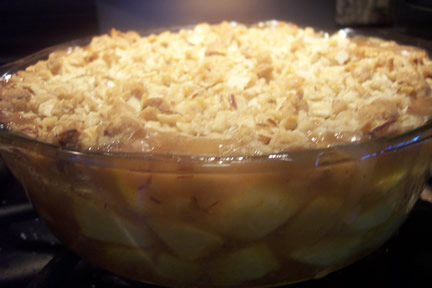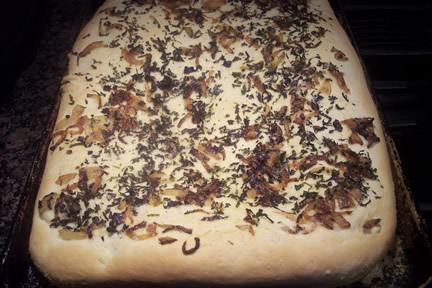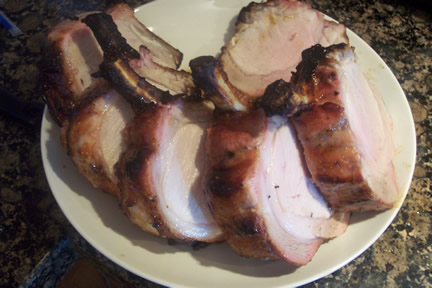Growing up Catholic always meant a fair amount of pageantry over a holiday or season with any kind of a message or virtuous overtone. Not that there’s anything wrong with that, and as Thanksgiving passes (even though my days of acceptance of organized religion in any form are long behind me) I always look at it as a time to reflect on the good fortune that we have here, and share that celebration with those close to us. Seeing as we had just celebrated birthdays a few weeks ago with the family, we decided that this year (still reeling from the reality of actual weekends off, and a long weekend to boot) we would have some good friends over for dinner Thanksgiving weekend.
The menu ingredients were quite predictable: turkey, cranberry, pumpkin, etc.
Some things are meant to be honoured with tradition, and the palette from which to cook Thanksgiving or Christmas dinner are among the most sacred. I have a long standing agreement with my wife: Christmas dinner will involve a strict menu of: A whole roasted stuffed turkey, mashed potatoes, mashed carrots and parsnips, brussel sprouts, cranberry sauce and gravy. Nothing More. Nothing Less. Thanksgiving on the other hand, there is some latitude allowed in the preparation of said sacred foodstuffs. A few years back, I had brought home some turkey confit and a brined turkey breast from the restaurant for a quick dinner for just the four of us. My son, the younger, declared turkey confit to be the finest food on the planet and henceforth a necessity whenever possible.
So, that brings us to the menu for the Thanksgiving dinner, Chez Green:
Turkey confit: of course
Brined roasted turkey breast: ditto
Mashed potatoes, parsnips and carrots, brussel sprouts: easy accompaniments
Stuffing (made in a casserole dish, but traditional ingredients) and gravy: must haves
Dessert: pumpkin pie (alright, this is sounding like a traditional dinner, but at least we’re having the confit!!!)
For something to start, I figured I would make something to nibble on, and settled on making a wheel of brie baked in pastry with cranberry chutney. Great sliced and smeared on fresh baguette.
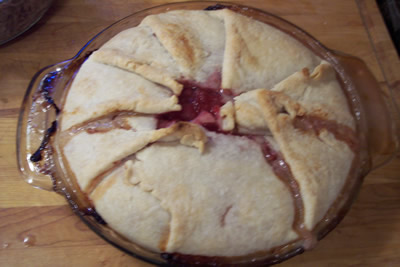
The turkey was in the fridge the day before, as the process of confit and brining is a 2 day affair, so I set out to transform the humble bird into a duo of exquisite proportions. Legs off and deboned, I ran out to the garden for a sachet of herbs, and along with some coarse salt and pepper set the legs on their way marinating overnight in a colander. This allows the leg to cure slightly, draw out some moisture, and seasons it well. (The colander is placed inside a second bowl which catches any liquid that comes out.) That accomplished, I prepared the brine, and once cooled thoroughly, place the turkey breast in a large bag and poured the brine over, sealed it well, and placed it in the refrigerator. The bones were roasted and a stock prepared for the following day’s stuffing and gravy.
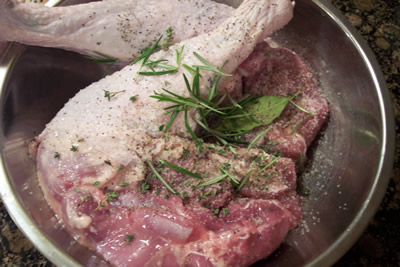
Morning of the dinner, a trip to market for the vegetables, and stage two of confit. Now the process of confit involves large amounts of fat, animal or otherwise as a cooking medium, so it’s important to understand the reasoning behind the process. In years gone by, before refrigeration, preservation of meat for the winter was a real necessity. When a pig was killed, a multistage process was a group undertaking to maximize the investment for the family’s food source. Fresh pork was made in to sausage, some meant for immediate consumption, some to be hung, smoked, and dried for later. Legs were salted and dried for hams, belly cured for bacon, and fat rendered for lard. The lard was then used for both cooking and storing of cooked meats for the winter (hence the term larder to mean a pantry) Confit was one of these processes that used it for both. Meat salted ovenight, then gently poached in its own fat is exceptionally tender and flavourful, and once the cooking process complete, could be packed away in an earthenware crock, the cooking fat poured over to create a sealed environment free of oxygen for preservation, and set in a cold place for several months for storage. in the winter, the confit would be reheated, removed from the fat, and eaten. History lesson aside, confit has become one of those traditional dishes that defies description. The simplicity of the process is easily understood, but easily done incorrectly, as it requires a low flame and a watchful cook to maintain the temperature at a gentle simmer, and a steady hand to remove it from the pan when cooked, as it’s quite tender. Done well, it’s a thing of beauty.
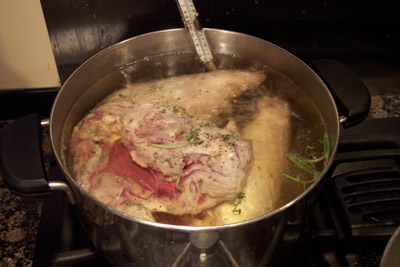
I placed my 2 litres of lard into a largish pot, and brought it up to just over the boiling point. (225 F) The legs were submerged gently, flame adjusted to medium low for now, and once the temperature had re-established its boiling point, dropped down to quite low. The whole idea is to maintain the cooking temperature at boiling (212 F / 100 C) for 2 hours, allowing the meat to slowly poach. Project well under way, I prepared the cranberry chutney, and easy one pot affair, and set it aside to cool. I made pastry, enough for both my pie and the brie, and set both batches aside to rest. I took a few minutes to peel vegetables and prepared a bit of trim fro the gravy, and set out to figure out how to authentically recreate stuffing outside of the bird.
I prepared my mix as I usually would and figured I had to account for two things in the cooking process: indirect heat, the effect of being insulated inside the bird and not get too crispy around the edges; and the moisture added to the cooking process from the turkey cooking around it. The first part was easily solved: a double layer of parchment inside a large ceramic casserole dish to protect it, and the second by a regular basting with a ladle of turkey stock as it cooked, every 15 minutes for an hour.
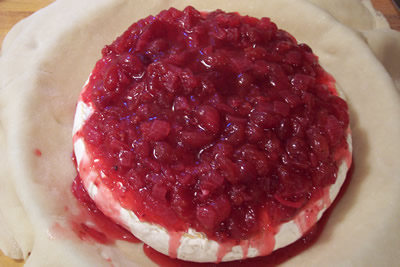
Stuffing and vegetables well in hand, I rolled out the pastry, lined the pie plate for the pumpkin and blind baked it, and prepared the brie. Very simple, just a large round of pastry, a wheel of brie or camembert inside, a thick layer of chutney, and then the pastry folded over to encase it all. I set it in the fridge for half an hour to chill, quickly made the pie filling (yes you can use good quality canned pumpkin), and brought the breast out of the brine.
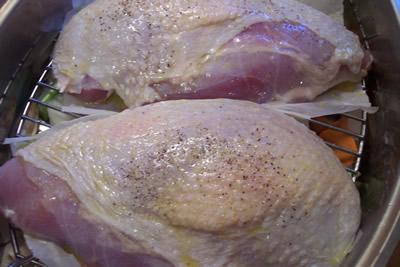
The pie shell came out of the oven, in went the brie for 45 minutes, allowing the shell to cool somewhat, at which point I filled it and placed the pumpkin pie into the oven alongside the brie. The brie came out 15 minutes later or so, and figuring I had half an hour before the pumpkin pie would be ready and the oven free, I checked the confit. Nice and tender, I gently lifted it out and placed it on a rack to drain of excess fat and cool enough to handle. I set is aside, rubbed the breast down with olive oil and salt and pepper, and placed it on a rack in the roasting pan, ready to replace the pie in the oven. The last of my major chores finished, I removed skin, bone, and tendon from the confit and shredded it, placing the tender meat into a casserole dish. I strained the leftover fat for another future batch (to be stored in the fridge), taking care to set the last little bit aside, which is a small amount of very intensely reduced turkey juice, (it looks like caramel), and put that separately into the fridge in a small bowl. It sets very quickly, allowing you to skim the fat off the top and put the turkey essence into the confit for when it is reheated. (trust me on this, it’s magic)

Confident all I had to do was cook a few veggies, the rest of the evening turned to the real essence of the day: How fortunate for us that we have a beautiful environment, clean air and water, a standard of living and quality of life second to none, and people to share it with. No matter how many things go on in the course of one year, how many changes one goes through in a lifetime, when you stop and take a moment to look at the big picture, life in Canada’s pretty darn good.


